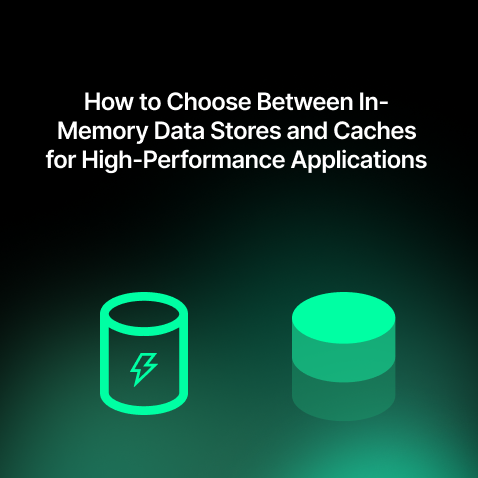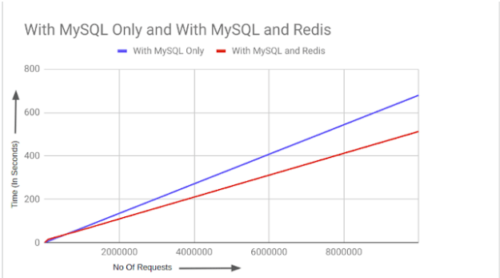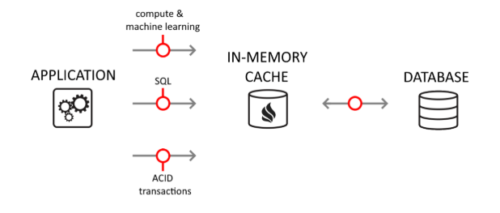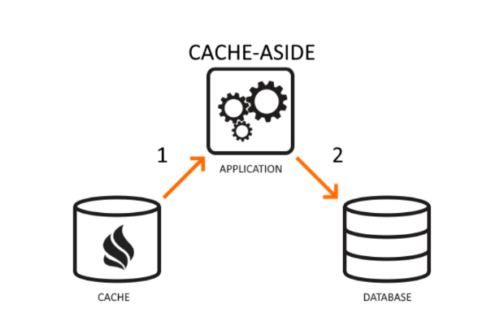How to Choose Between In-Memory Data Stores and Caches for High-Performance Applications
- Nitin Yadav
- Blog
About

Explore the key differences between in-memory data stores and caches, their use cases, pros, cons, and how they power real-time, high-performance applications.
Industries
- Caches, DevOps, MySQL
Share Via
Introduction
In our fast-moving, data-centric world, it is very essential to have low latency and high throughput for better application performance. For applications that require real-time performance, in-memory data stores and caches are the key players in any contemporary architecture. Although in-memory data stores and in-memory cache have some things in common, their specific use cases are different. As a DevOps engineer, it’s important to grasp these differences to build systems that will have the capability to scale effectively without sacrificing application performance
In-Memory Data Stores
In-memory data stores or databases keep and handle data in the system’s RAM or memory. Such setup helps in lightning-fast data retrieval, especially when we compare it to the general disk-based databases. Examples of in-memory databases are: Redis, Memgraph, Hazelcast, Apache Ignite and Hazelcast. Some benchmarking tests have shown that using MySQL with Redis (a popular in-memory database) as a caching layer, can decrease query latency by up to 25% versus using a standalone MySQL database.
We can optimize the data structures used by in-memory databases for faster retrieval. For example, relational databases often use B-trees for indexes, allowing quick searches while supporting reading and writing large data blocks to disk. In-memory databases don’t need to write data blocks to disk and can choose more performant data structures, further reducing latency. In-memory databases often store and use data as-is, without any transformation or parsing at the database layer. This also adds to the reduction in latency, as it speeds up both read and write times.
In-memory databases have become more popular due to technological improvements. First, the price per gigabyte (GB) of RAM has reduced significantly in the last 20 years, which has made using memory for data storage more affordable. Improvements in in-memory database solutions and managed cloud services have also helped alleviate some of their main disadvantages.
Additionally, in-memory databases like Redis can now snapshot data from memory to disk, allowing data restoration if a server fails. Cloud services provide geo-replication, meaning applications can stay online by failing over in the event of an issue. This cost reduction and reliability improvement have made in-memory databases feasible options for modern applications and websites.
Key Use Cases
1. Primary Data Storage for High-Speed Applications: Applications that need super fast read and write operations, often use in-memory data stores as their primary data storage. This is very commonly used in real-time analytics or financial trading applications.
2. Session Management: Applications like online shopping platforms use in-memory data stores to manage the user session data for seamless experiences across page reloads or device transitions.
3. Message Queues: In-memory databases can also be used as message queues, providing a buffer layer for microservices. In a message queue, messages are stored in memory and are processed in the order that they are received.
Advantages
1. Low latency, providing real time responses: Latency is the lag between the request to access data and the application’s response. In-memory databases offer predictable low latencies irrespective of scale. They deliver microsecond read latency, single-digit millisecond write latency, and high throughput. As a result, in-memory storage allows enterprises to make data-based decisions in real-time. We can design applications that process data and respond to changes before it’s too late. For example, in-memory computing of sensor data from self-driving vehicles can give the desired split-second response time for emergency braking.
2. High throughput: In-memory databases are known for their high throughput. Throughput refers to the number of read (read throughput) or write (write throughput) operations over a given period of time. Examples include bytes/minute or transactions per second.
3. High scalability: We can scale our in-memory database to meet fluctuating application demands. Both write and read scaling is possible without adversely impacting performance. The database stays online and supports read-and-write operations during resizing.
Limitations
1. Increase in cost if used as the sole database: In-memory databases can reduce costs when used with traditional databases. However, they’re often more expensive when used as the sole database, especially if storing large amounts of data, due to the higher price of memory versus disk storage.
2. Limited storage size: The cost of such databases prohibits the amount of data we can keep, as storing large data sets in memory becomes expensive and often requires multiple servers.
3. Fewer security features: In-memory databases generally don’t use security features such as encryption, as everything must be in memory — including encryption keys. These features make encrypting data ineffective because any malicious entity with access to the memory can, in theory, also access the encryption key.
In-Memory Caches
In-memory caches temporarily store frequently accessed data in memory, focusing on speeding up access times for repetitive data requests. This helps to boost application performance. Cache memory is stored on random-access memory. Due to its location, the CPU can access it at a much faster speed compared to the main memory. The cache memory sits between the main memory and the CPU which helps to move data between the main memory and processor at very high speeds. Data between cache memory and CPU is moved at word transfer speed. However the data between main memory and cache is moved as blocks, also called as pages. Examples of such in-memory cache tools are Redis (when used as cache) and Memcached. 
Caching Strategies
Depending on how often we update our database and whether consistency is a bigger concern than speed, we can choose from various cache strategies: cache aside, read-through, and write-through.
- Cache-aside is the standard, simple caching strategy. The application lazy-loads database data on-demand to boost data fetching performance. In this strategy, the application first requests the data from the cache. If data exists in the cache (when a “cache hit” happens), the app retrieves information from the cache. If data is not in the cache (a “cache miss”), the app reads data from the data store and inserts it into or updates it to the cache for later use.

2.Read-through is a form of lazy-load caching similar to the cache-aside strategy. However, unlike cache-aside, our app is unaware of the data store. So, it queries the database by the caching mechanism instead. By delegating database reads to the cache component, our application code becomes cleaner — but at the expense of configuring extra caching components for database credentials.

3.Write-through is a caching strategy where our application delegates database operations to the cache (similarly to the read-through cache, but for writes). Our app updates the cache, which then synchronously writes the new data to the database. This process slows the writing operation but ensures cache consistency and reliability. Developers use this strategy when consistency is a significant concern, and the application doesn’t frequently write data to the cache.

Key Use Cases
1.Reducing Database Load: Frequently accessed data, like product details on an e-commerce site, can be cached to reduce the load on backend databases.
2.Content Delivery: In-memory caches work hand-in-hand with content delivery networks (CDNs) to deliver cached web pages or assets quickly to end users.
3. Query Optimization: They store the results of complex database queries to improve retrieval times for similar future requests.
Real-World Use Cases
- According to the results of a study released by Google in 2016, 53 percent of visitors abandon a website if it takes longer than three seconds to load. As a result, enterprises increasingly look for solutions such as in-memory cache to improve application performance.
- Accelerating online database applications is the most common use case for in-memory caching. For example, a high-traffic website storing content in a database will significantly benefit from the in-memory cache. The website can replace frequent, time-consuming, disk-based database reads and writes with faster and reliable operations based on memory for online transactions.
- Another related use case is a business intelligence (BI) report requiring complex queries to a data store. When business users check the report frequently, but it contains seldom-updated historical data, a cache sitting in front of the data store can save time, network bandwidth, and processing capacity.
Advantages
1. Increased Speed and Performance: One of the most remarkable advantages of in-memory caches is to amplify the data access speed. As data is saved in the primary memory, it can be accessed a lot quicker than ordinary disk-based databases. This approves for real-time data processing and analysis, enabling companies to make quicker and greater knowledgeable decisions.
2. Cost-Effective: In-memory caches are low cost in contrast to usual disk-based databases. As data is saved in the principal memory, there is no reason for costly disk storage, ensuring financial savings for businesses.
3. Reduced Data Processing Time: With ordinary disk-based databases, information needs to be retrieved from the disk earlier than it can be processed. In contrast, in-memory caches keep records in the principal memory, disposing of the need for disk access. This results in decreased data processing time and enhances system performance.
4. Improved Scalability: In-memory caches are relatively scalable, permitting organizations to take care of large quantities of data besides having any overall performance degradation. As data is saved in the principal memory, it can be elevated by means of adding the memory to the system if required without any problem.
Limitations
1. Memory Overhead: In-memory caching consumes additional memory resources, which can be a concern for applications with large datasets or limited memory availability. Allocating excessive memory for caching may lead to increased operational costs and resource contention.
2. Cache Invalidation: Ensuring cache consistency and validity can be challenging, especially when dealing with frequently changing data or distributed cache environments. Implementing effective cache invalidation strategies is crucial to maintain data integrity and prevent stale or outdated data from being served.
3. Cache Coherency: In distributed cache environments, maintaining cache coherency across multiple cache nodes can be complex. Synchronization and coordination mechanisms are required to ensure that updates made to cached data are propagated consistently and efficiently across all cache replicas.
4. Performance Trade-offs: While in-memory caches can improve application performance by reducing access latency, there may be trade-offs in terms of CPU overhead, cache eviction overhead, and memory management overhead. It’s essential to carefully balance these trade-offs to achieve optimal performance.
5. Concurrency Control: Managing concurrent access to the cache from multiple threads or processes requires careful consideration of concurrency control mechanisms such as locking, synchronization, and transactional semantics. Inefficient concurrency control can lead to contention, deadlock, or performance degradation.
Conclusion
In today’s architecture landscape, it’s common to see in-memory data stores and caches working hand in hand. For example, we might have a caching layer positioned above an in-memory data store, creating a hybrid setup that strikes a balance between speed, persistence, and scalability. As a DevOps engineer, we need to stay informed about which architecture, tools, and services adequately address our company’s in-memory distributed caching needs. In recent years, businesses have been moving their in-store experiences to real-time digital interactions, spiking interest in in-memory cache computing. We need to be aware of new approaches that deliver real-time experiences without disrupting internal systems or requiring to switch to a completely new technical stack.
Frequently asked questions
In-memory data stores are databases that hold all data in RAM to provide fast read/write access, often used as primary storage. In contrast, in-memory caches temporarily store frequently accessed data to reduce load on databases and speed up response times. Caches prioritize performance over persistence.
Use an in-memory database when you need real-time performance, reliable data persistence, and fast analytics, such as in financial trading or IoT applications. Caches are better for storing temporary, frequently accessed data that can be refreshed or recomputed easily.
.
Redis is both. It can function as an in-memory cache and also as a fully-fledged in-memory data store, offering persistence, replication, and advanced data structures depending on how it’s configured.
In-memory caches offer ultra-fast data access, reduced latency, improved scalability, and lower database load. They are cost-effective for handling repetitive queries and boosting website performance in real-time environments.
In-memory data stores can be costly due to memory requirements, have limited storage capacity, and offer fewer built-in security features like encryption. They may also require additional mechanisms for persistence and fault tolerance.
Caching improves performance by storing frequently accessed data in RAM, allowing faster data retrieval than traditional disk storage. This reduces latency, minimizes database hits, and increases application responsiveness.
Common caching strategies include:
- Cache-aside (lazy loading)
- Read-through
Write-through
Each approach balances data consistency, latency, and developer control depending on application needs.
Yes, in-memory caches are often layered on top of databases to reduce read load and increase speed. This hybrid approach is ideal for content delivery, session management, and high-traffic applications needing quick responses.
Applications requiring real-time analytics, low latency, or high transaction throughput—such as fintech platforms, gaming servers, fraud detection systems, and real-time dashboards—benefit greatly from in-memory databases.
Modern in-memory databases like Redis offer features like snapshotting, persistence to disk, and geo-replication. These ensure that data can be recovered after failures and support high availability in distributed environments.
Related Posts

Comprehensive Guide to HTTP Errors in DevOps: Causes, Scenarios, and Troubleshooting Steps
- Blog

Trivy: The Ultimate Open-Source Tool for Container Vulnerability Scanning and SBOM Generation
- Blog

Prometheus and Grafana Explained: Monitoring and Visualizing Kubernetes Metrics Like a Pro
- Blog

CI/CD Pipeline Failures Explained: Key Debugging Techniques to Resolve Build and Deployment Issues
- Blog

DevSecOps in Action: A Complete Guide to Secure CI/CD Workflows
- Blog

AWS WAF Explained: Protect Your APIs with Smart Rate Limiting
- Blog

